Haggai Maron
Optimizing Tensor Network Contraction Using Reinforcement Learning
Apr 18, 2022



Abstract:Quantum Computing (QC) stands to revolutionize computing, but is currently still limited. To develop and test quantum algorithms today, quantum circuits are often simulated on classical computers. Simulating a complex quantum circuit requires computing the contraction of a large network of tensors. The order (path) of contraction can have a drastic effect on the computing cost, but finding an efficient order is a challenging combinatorial optimization problem. We propose a Reinforcement Learning (RL) approach combined with Graph Neural Networks (GNN) to address the contraction ordering problem. The problem is extremely challenging due to the huge search space, the heavy-tailed reward distribution, and the challenging credit assignment. We show how a carefully implemented RL-agent that uses a GNN as the basic policy construct can address these challenges and obtain significant improvements over state-of-the-art techniques in three varieties of circuits, including the largest scale networks used in contemporary QC.
Sign and Basis Invariant Networks for Spectral Graph Representation Learning
Apr 11, 2022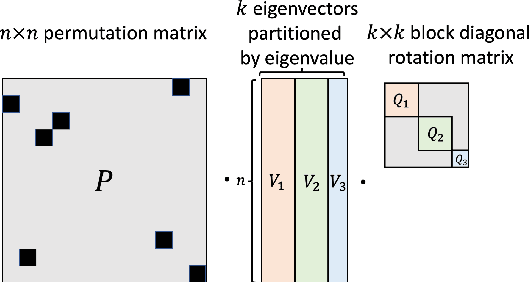
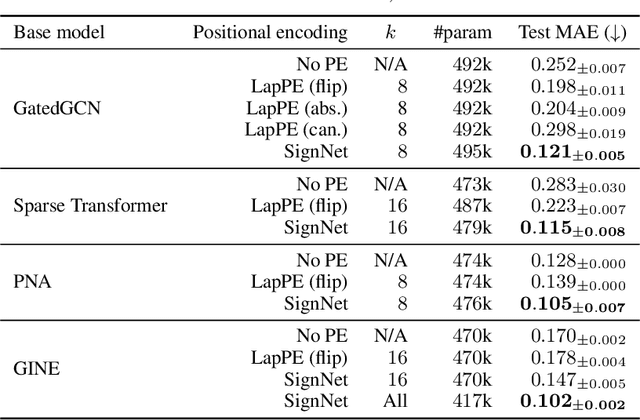
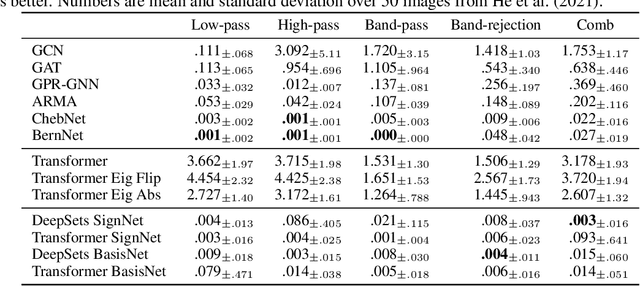
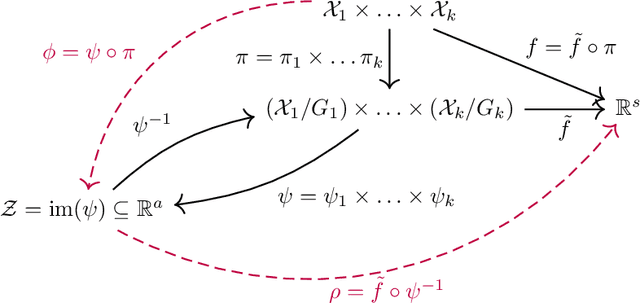
Abstract:Many machine learning tasks involve processing eigenvectors derived from data. Especially valuable are Laplacian eigenvectors, which capture useful structural information about graphs and other geometric objects. However, ambiguities arise when computing eigenvectors: for each eigenvector $v$, the sign flipped $-v$ is also an eigenvector. More generally, higher dimensional eigenspaces contain infinitely many choices of basis eigenvectors. These ambiguities make it a challenge to process eigenvectors and eigenspaces in a consistent way. In this work we introduce SignNet and BasisNet -- new neural architectures that are invariant to all requisite symmetries and hence process collections of eigenspaces in a principled manner. Our networks are universal, i.e., they can approximate any continuous function of eigenvectors with the proper invariances. They are also theoretically strong for graph representation learning -- they can approximate any spectral graph convolution, can compute spectral invariants that go beyond message passing neural networks, and can provably simulate previously proposed graph positional encodings. Experiments show the strength of our networks for molecular graph regression, learning expressive graph representations, and learning implicit neural representations on triangle meshes. Our code is available at https://github.com/cptq/SignNet-BasisNet .
A Simple and Universal Rotation Equivariant Point-cloud Network
Mar 03, 2022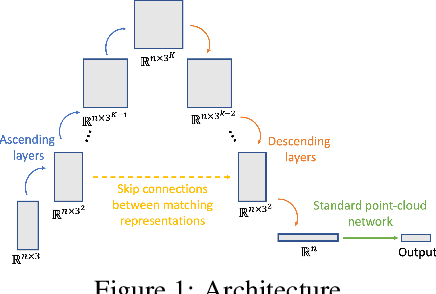
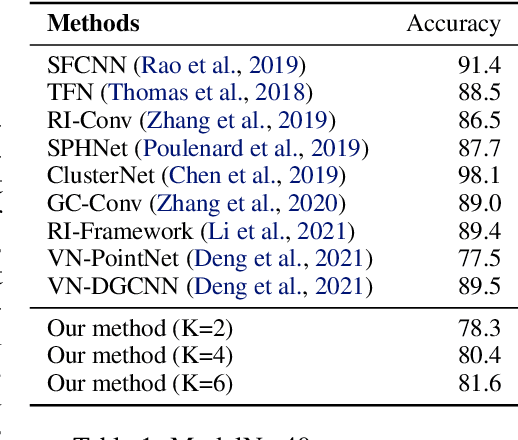
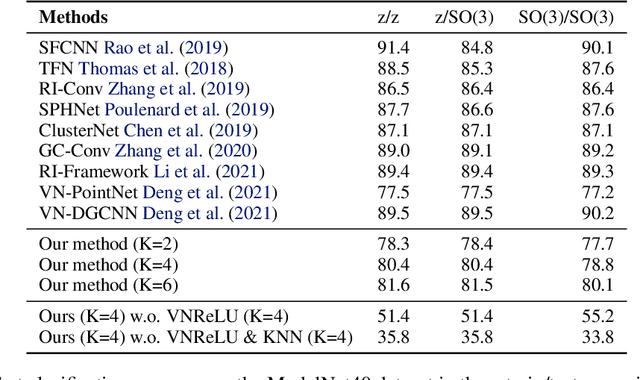
Abstract:Equivariance to permutations and rigid motions is an important inductive bias for various 3D learning problems. Recently it has been shown that the equivariant Tensor Field Network architecture is universal -- it can approximate any equivariant function. In this paper we suggest a much simpler architecture, prove that it enjoys the same universality guarantees and evaluate its performance on Modelnet40. The code to reproduce our experiments is available at \url{https://github.com/simpleinvariance/UniversalNetwork}
Multi-Task Learning as a Bargaining Game
Feb 02, 2022



Abstract:In Multi-task learning (MTL), a joint model is trained to simultaneously make predictions for several tasks. Joint training reduces computation costs and improves data efficiency; however, since the gradients of these different tasks may conflict, training a joint model for MTL often yields lower performance than its corresponding single-task counterparts. A common method for alleviating this issue is to combine per-task gradients into a joint update direction using a particular heuristic. In this paper, we propose viewing the gradients combination step as a bargaining game, where tasks negotiate to reach an agreement on a joint direction of parameter update. Under certain assumptions, the bargaining problem has a unique solution, known as the Nash Bargaining Solution, which we propose to use as a principled approach to multi-task learning. We describe a new MTL optimization procedure, Nash-MTL, and derive theoretical guarantees for its convergence. Empirically, we show that Nash-MTL achieves state-of-the-art results on multiple MTL benchmarks in various domains.
Federated Learning with Heterogeneous Architectures using Graph HyperNetworks
Jan 20, 2022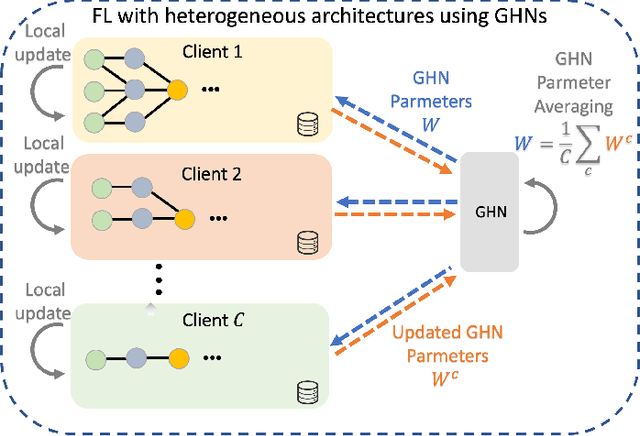
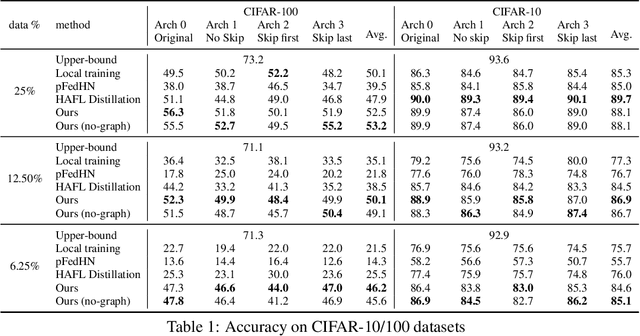
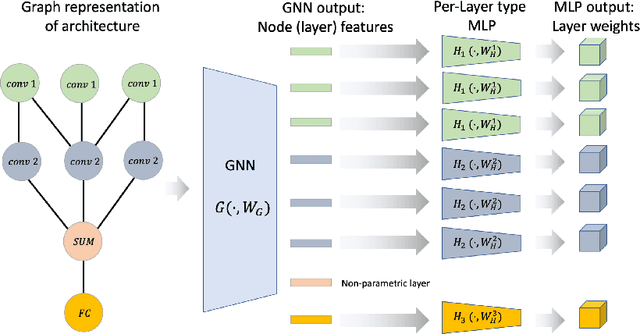
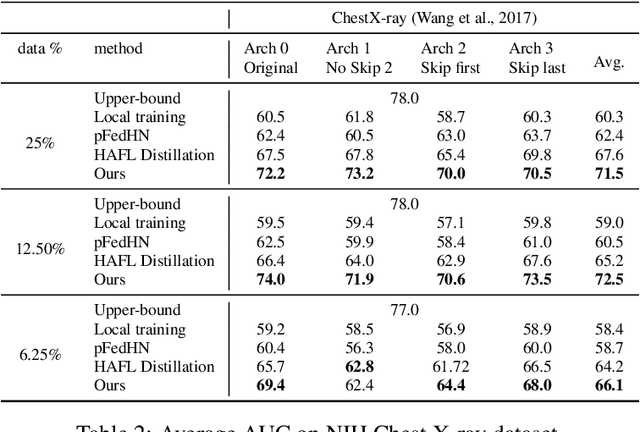
Abstract:Standard Federated Learning (FL) techniques are limited to clients with identical network architectures. This restricts potential use-cases like cross-platform training or inter-organizational collaboration when both data privacy and architectural proprietary are required. We propose a new FL framework that accommodates heterogeneous client architecture by adopting a graph hypernetwork for parameter sharing. A property of the graph hyper network is that it can adapt to various computational graphs, thereby allowing meaningful parameter sharing across models. Unlike existing solutions, our framework does not limit the clients to share the same architecture type, makes no use of external data and does not require clients to disclose their model architecture. Compared with distillation-based and non-graph hypernetwork baselines, our method performs notably better on standard benchmarks. We additionally show encouraging generalization performance to unseen architectures.
Weisfeiler and Leman go Machine Learning: The Story so far
Dec 18, 2021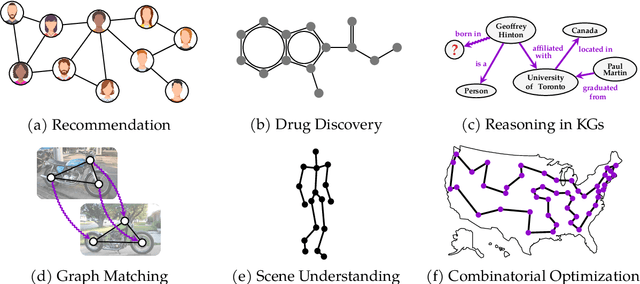



Abstract:In recent years, algorithms and neural architectures based on the Weisfeiler-Leman algorithm, a well-known heuristic for the graph isomorphism problem, emerged as a powerful tool for machine learning with graphs and relational data. Here, we give a comprehensive overview of the algorithm's use in a machine learning setting, focusing on the supervised regime. We discuss the theoretical background, show how to use it for supervised graph- and node representation learning, discuss recent extensions, and outline the algorithm's connection to (permutation-)equivariant neural architectures. Moreover, we give an overview of current applications and future directions to stimulate further research.
Equivariant Subgraph Aggregation Networks
Oct 06, 2021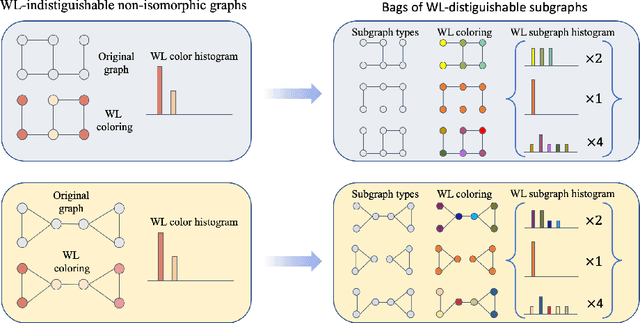
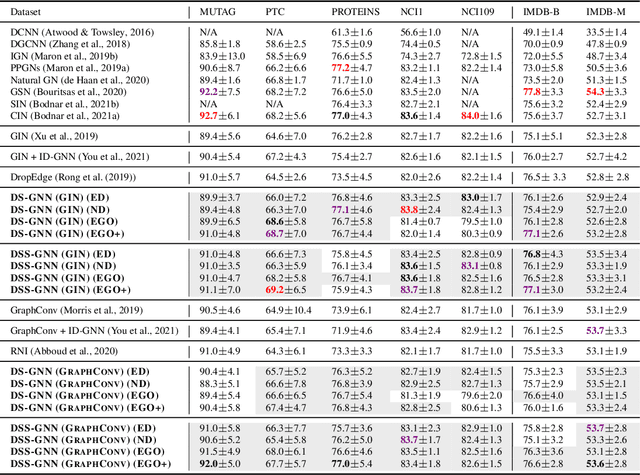
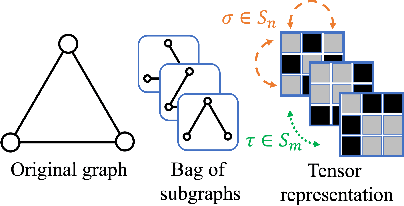
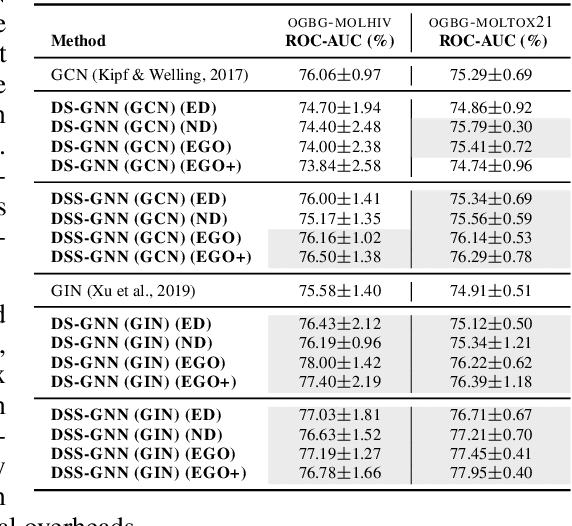
Abstract:Message-passing neural networks (MPNNs) are the leading architecture for deep learning on graph-structured data, in large part due to their simplicity and scalability. Unfortunately, it was shown that these architectures are limited in their expressive power. This paper proposes a novel framework called Equivariant Subgraph Aggregation Networks (ESAN) to address this issue. Our main observation is that while two graphs may not be distinguishable by an MPNN, they often contain distinguishable subgraphs. Thus, we propose to represent each graph as a set of subgraphs derived by some predefined policy, and to process it using a suitable equivariant architecture. We develop novel variants of the 1-dimensional Weisfeiler-Leman (1-WL) test for graph isomorphism, and prove lower bounds on the expressiveness of ESAN in terms of these new WL variants. We further prove that our approach increases the expressive power of both MPNNs and more expressive architectures. Moreover, we provide theoretical results that describe how design choices such as the subgraph selection policy and equivariant neural architecture affect our architecture's expressive power. To deal with the increased computational cost, we propose a subgraph sampling scheme, which can be viewed as a stochastic version of our framework. A comprehensive set of experiments on real and synthetic datasets demonstrates that our framework improves the expressive power and overall performance of popular GNN architectures.
StyleGAN-NADA: CLIP-Guided Domain Adaptation of Image Generators
Aug 02, 2021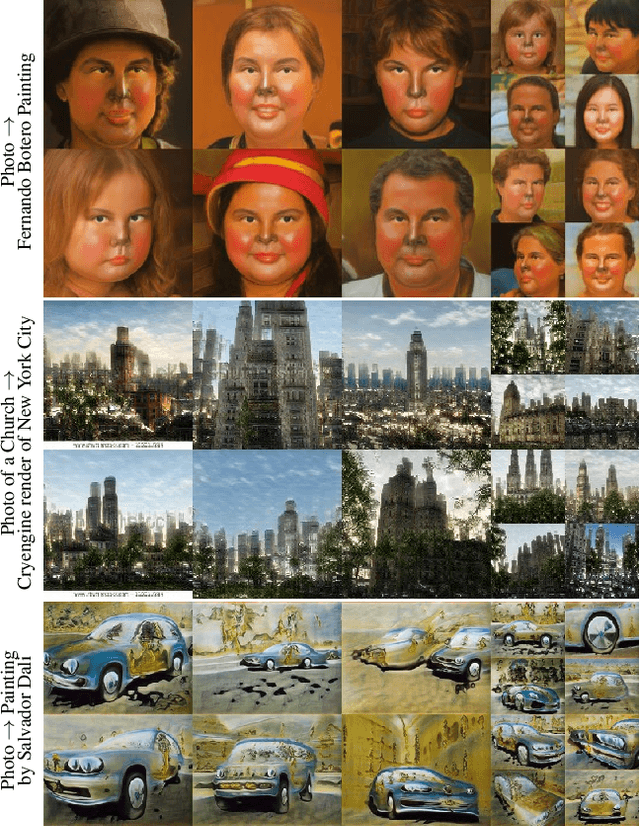
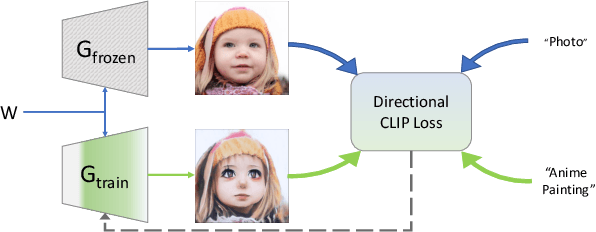
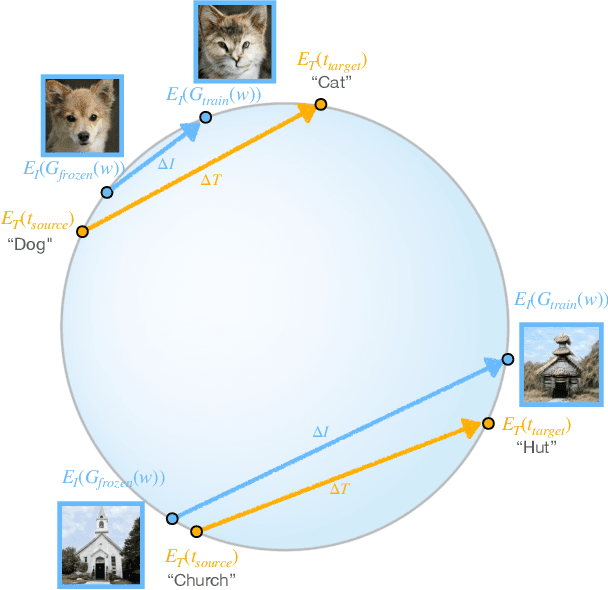
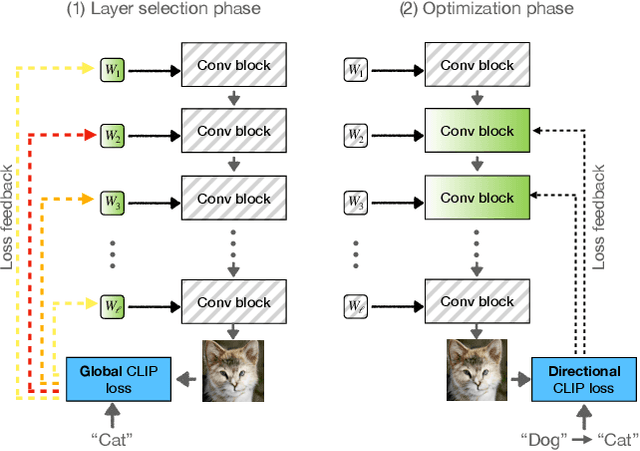
Abstract:Can a generative model be trained to produce images from a specific domain, guided by a text prompt only, without seeing any image? In other words: can an image generator be trained blindly? Leveraging the semantic power of large scale Contrastive-Language-Image-Pre-training (CLIP) models, we present a text-driven method that allows shifting a generative model to new domains, without having to collect even a single image from those domains. We show that through natural language prompts and a few minutes of training, our method can adapt a generator across a multitude of domains characterized by diverse styles and shapes. Notably, many of these modifications would be difficult or outright impossible to reach with existing methods. We conduct an extensive set of experiments and comparisons across a wide range of domains. These demonstrate the effectiveness of our approach and show that our shifted models maintain the latent-space properties that make generative models appealing for downstream tasks.
Deep Permutation Equivariant Structure from Motion
Apr 14, 2021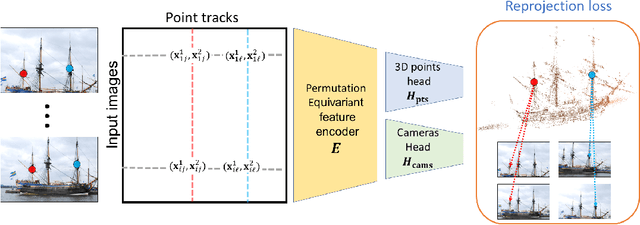
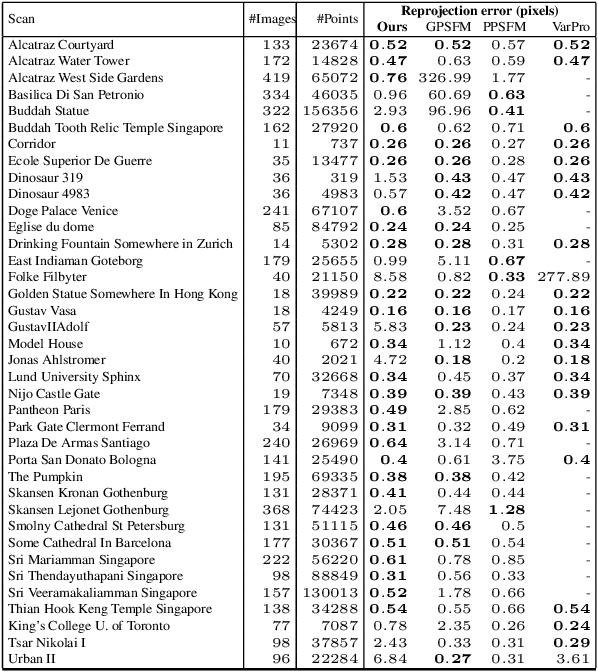
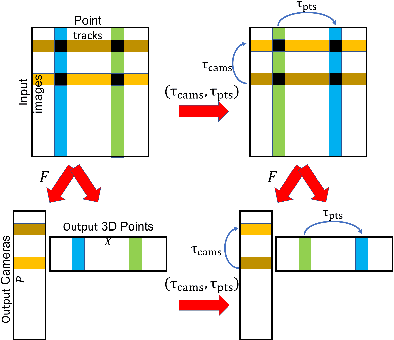
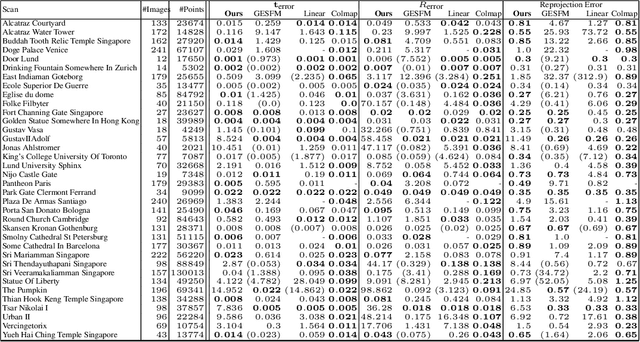
Abstract:Existing deep methods produce highly accurate 3D reconstructions in stereo and multiview stereo settings, i.e., when cameras are both internally and externally calibrated. Nevertheless, the challenge of simultaneous recovery of camera poses and 3D scene structure in multiview settings with deep networks is still outstanding. Inspired by projective factorization for Structure from Motion (SFM) and by deep matrix completion techniques, we propose a neural network architecture that, given a set of point tracks in multiple images of a static scene, recovers both the camera parameters and a (sparse) scene structure by minimizing an unsupervised reprojection loss. Our network architecture is designed to respect the structure of the problem: the sought output is equivariant to permutations of both cameras and scene points. Notably, our method does not require initialization of camera parameters or 3D point locations. We test our architecture in two setups: (1) single scene reconstruction and (2) learning from multiple scenes. Our experiments, conducted on a variety of datasets in both internally calibrated and uncalibrated settings, indicate that our method accurately recovers pose and structure, on par with classical state of the art methods. Additionally, we show that a pre-trained network can be used to reconstruct novel scenes using inexpensive fine-tuning with no loss of accuracy.
How to Stop Epidemics: Controlling Graph Dynamics with Reinforcement Learning and Graph Neural Networks
Oct 26, 2020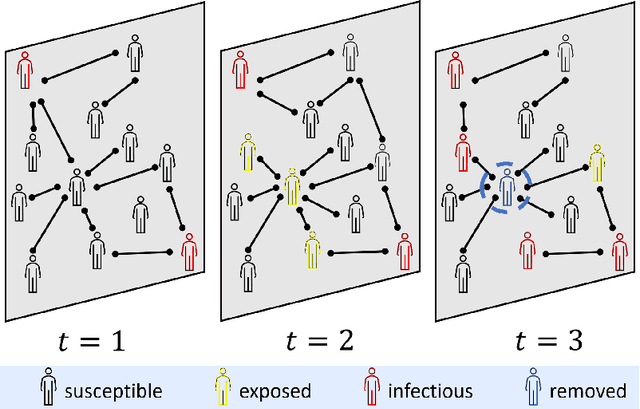
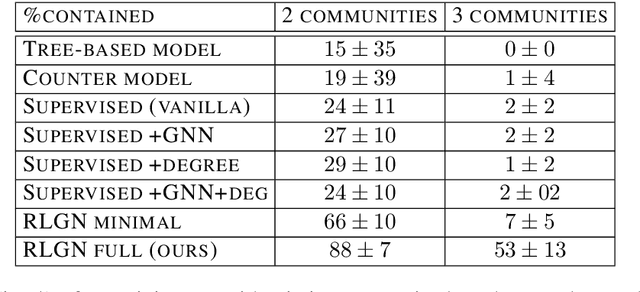
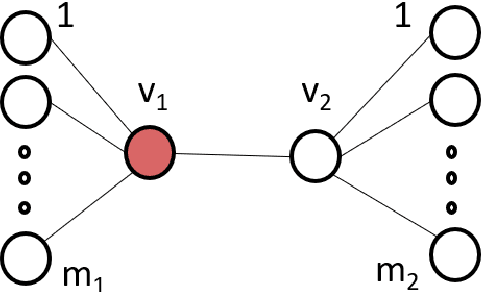
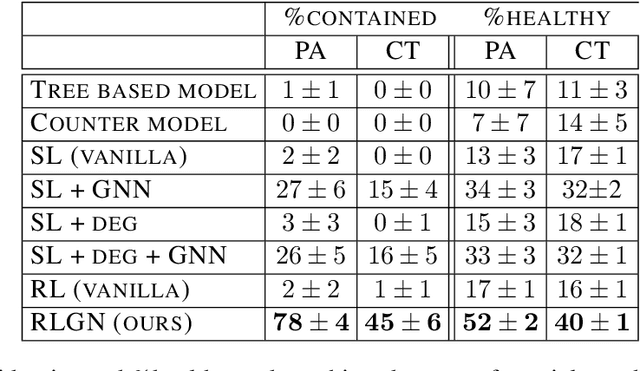
Abstract:We consider the problem of monitoring and controlling a partially-observed dynamic process that spreads over a graph. This problem naturally arises in contexts such as scheduling virus tests or quarantining individuals to curb a spreading epidemic; detecting fake news spreading on online networks by manually inspecting posted articles; and targeted marketing where the objective is to encourage the spread of a product. Curbing the spread and constraining the fraction of infected population becomes challenging when only a fraction of the population can be tested or quarantined. To address this challenge, we formulate this setup as a sequential decision problem over a graph. In face of an exponential state space, combinatorial action space and partial observability, we design RLGN, a novel tractable Reinforcement Learning (RL) scheme to prioritize which nodes should be tested, using Graph Neural Networks (GNNs) to rank the graph nodes. We evaluate this approach in three types of social-networks: community-structured, preferential attachment, and based on statistics from real cellular tracking. RLGN consistently outperforms all baselines in our experiments. It suggests that prioritizing tests using RL on temporal graphs can increase the number of healthy people by $25\%$ and contain the epidemic $30\%$ more often than supervised approaches and $2.5\times$ more often than non-learned baselines using the same resources.
 Add to Chrome
Add to Chrome Add to Firefox
Add to Firefox Add to Edge
Add to Edge